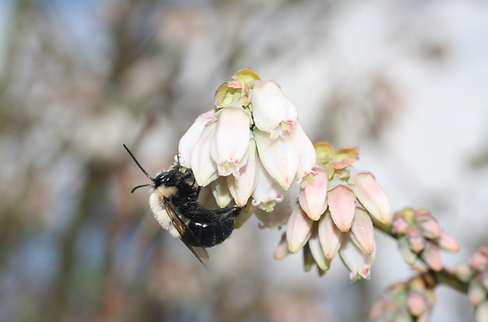Heat Impact
Bloom and Fruit
Heat stress during the bloom to ripening stages can significantly reduce blueberry yield and fruit quality. High temperatures impair pollen viability, shorten the pollination window, and hinder fruit set, while also accelerating water loss and sugar imbalance during fruit development. These effects can lead to smaller, softer, sunburned berries with reduced flavor and market value.
More images of damages are located under "Photo Library".

Flowering and Pollination
Floral bud development in blueberries is highly sensitive to heat, particularly during the bud swell stage, where extreme temperatures can reduce fruit set by nearly 40%. Heat stress lowers both the quantity and protein quality of pollen, impairing fertilization and harming pollinators like bees, which face increased mortality and reproductive issues from poor-quality pollen. Additionally, high temperatures shorten the pollination window by reducing pollen viability and accelerating flower aging, further limiting fruit set and yield.
Fruit Development and Ripening
Elevated temperatures during fruit development can significantly reduce the marketable yield of blueberries by negatively affecting berry firmness, size, flavor, and appearance. Heat stress leads to moisture loss, softening, and shriveling, while also impairing sugar accumulation, resulting in less desirable fruit. Additionally, compressed ripening periods complicate labor scheduling and increase the risk of harvest delays, often resulting in overripe or sun-damaged berries that do not meet market standards. Heat can also potentially alter pest behaviour and weaken plants' defence, making blueberries more susceptible. The image on the right shows one of the major pests, spotted wing drosophila, and the mushy berry it causes.

